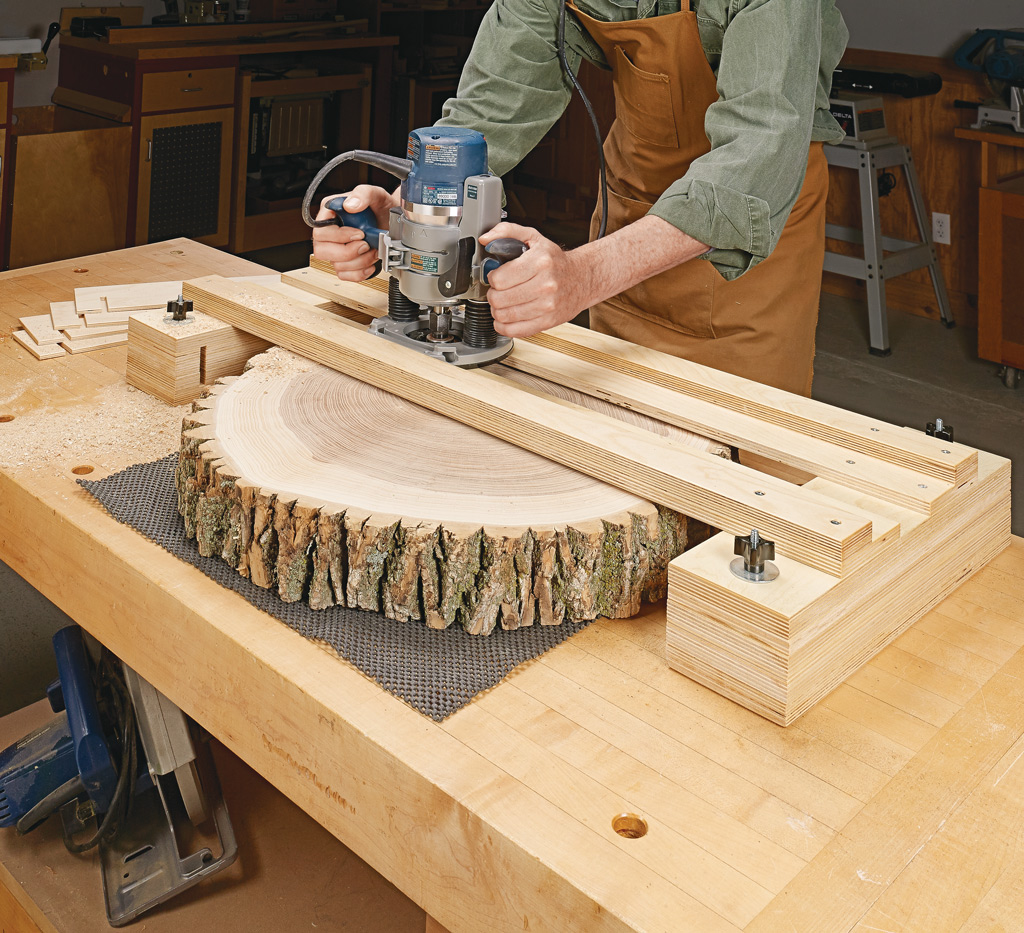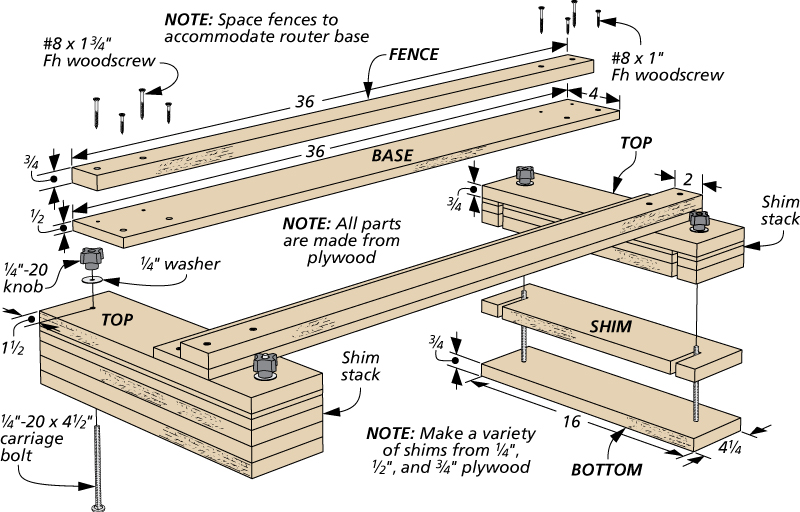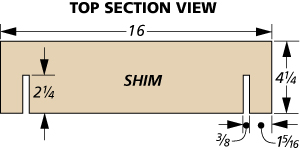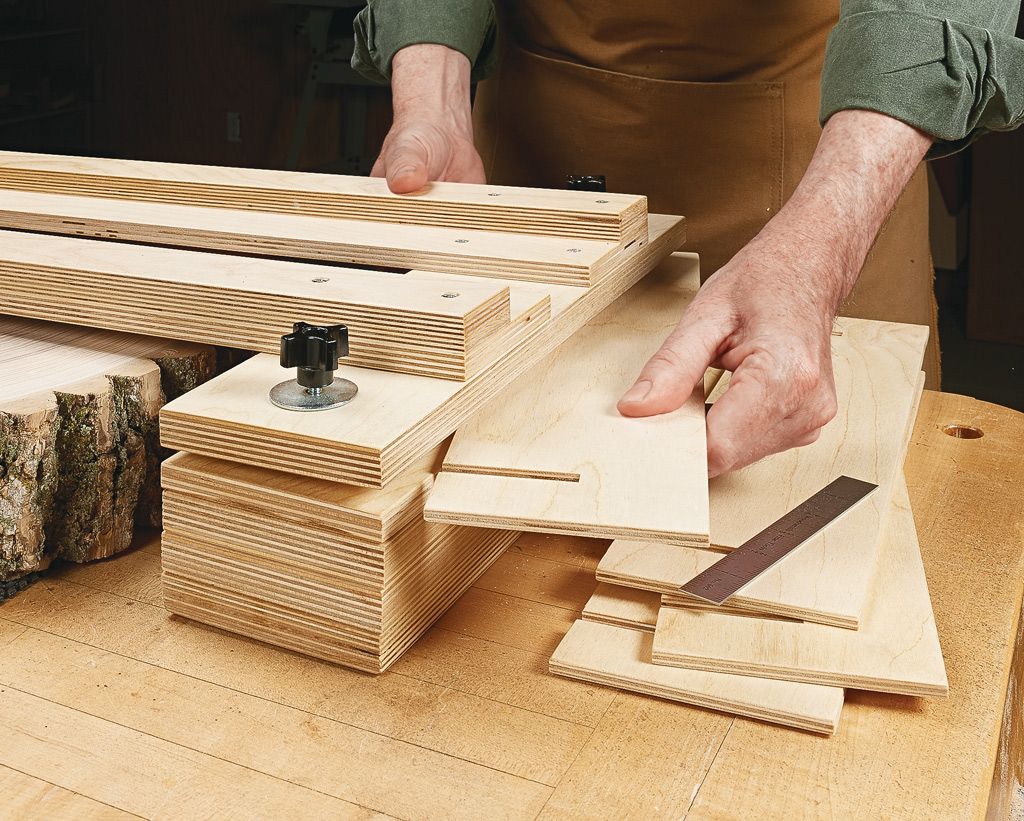
I work with a lot of rough-sawn lumber and live-edged tree slices, like the one shown above. Unfortunately, my planer is usually either too small to handle such large pieces, or it would cause too much tearout on endgrain. To get around this problem, I built this router leveling jig out of plywood. I sized my jig to accommodate the largest lumber slabs and tree slices that I use, but it could be made larger to suit your needs. With a large bowl and tray bit in the router, make a light pass along the fence. After each pass, slide the shim stacks over by just less than the diameter of the router bit and make another pass. It may be necessary to lower the bit and make several passes to completely flatten the surface.
 The leveling jig is nothing more than two router guides consisting of a base and a fence. The router guides are attached at either end to a couple of shim stacks.
The leveling jig is nothing more than two router guides consisting of a base and a fence. The router guides are attached at either end to a couple of shim stacks.
 The shim stacks have a solid top and bottom, but the shims in the middle of the stacks are slotted to allow them to be easily added or removed (detail ‘a’). The leveling jig is set in position over the workpiece. I place an equal number of shims in each shim stack until the router guides just clear the highest point of my workpiece. The four knobs are then tightened down.
The shim stacks have a solid top and bottom, but the shims in the middle of the stacks are slotted to allow them to be easily added or removed (detail ‘a’). The leveling jig is set in position over the workpiece. I place an equal number of shims in each shim stack until the router guides just clear the highest point of my workpiece. The four knobs are then tightened down.
 To use the leveling jig, you’ll need to place it, and the material being leveled, on a flat surface. My workbench works fine for this. If your material isn’t heavy enough to stay in position, you may need to use a non-slip pad to keep it from sliding on the workbench.
To use the leveling jig, you’ll need to place it, and the material being leveled, on a flat surface. My workbench works fine for this. If your material isn’t heavy enough to stay in position, you may need to use a non-slip pad to keep it from sliding on the workbench.
Related: Best Table Saw












